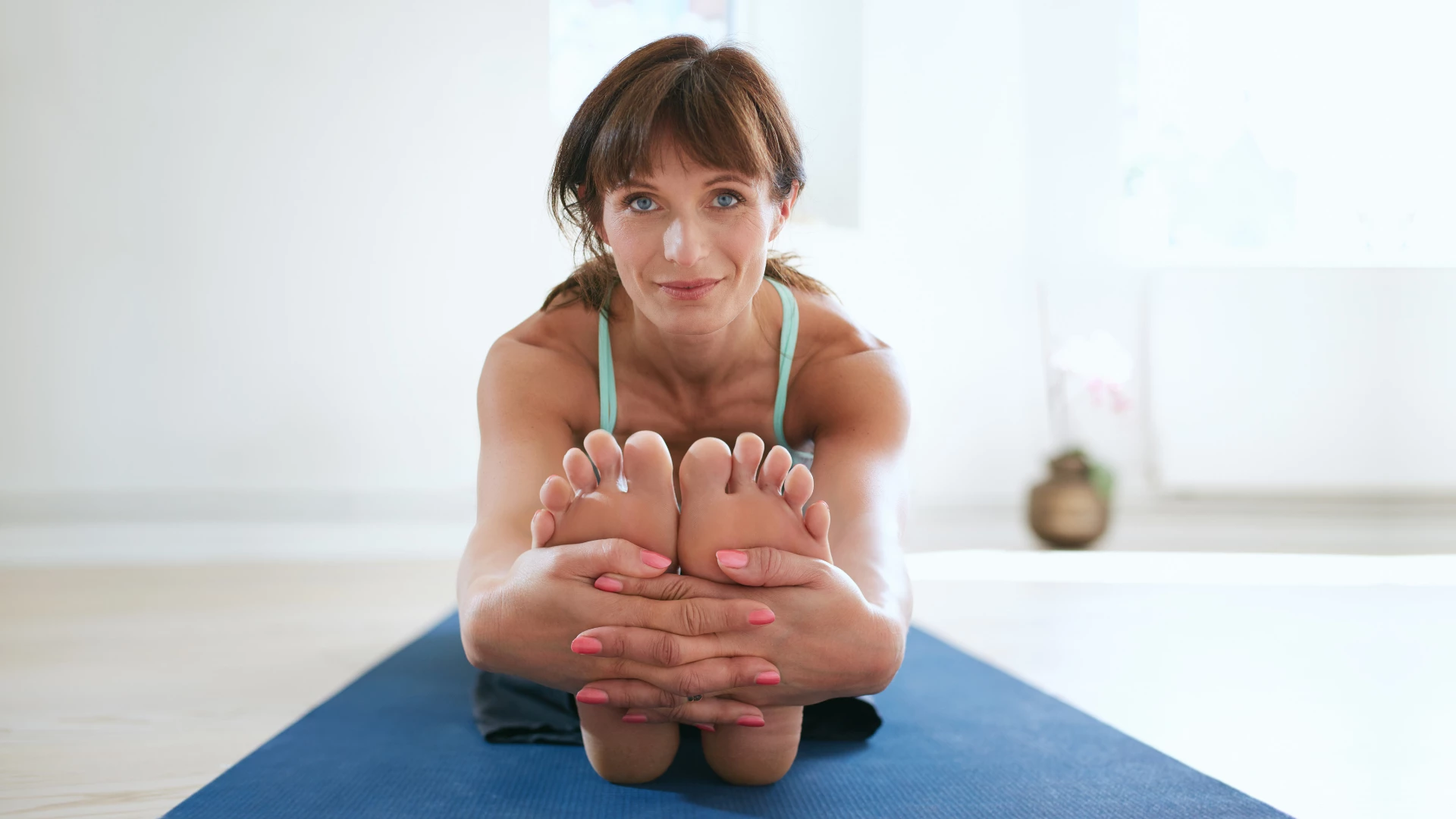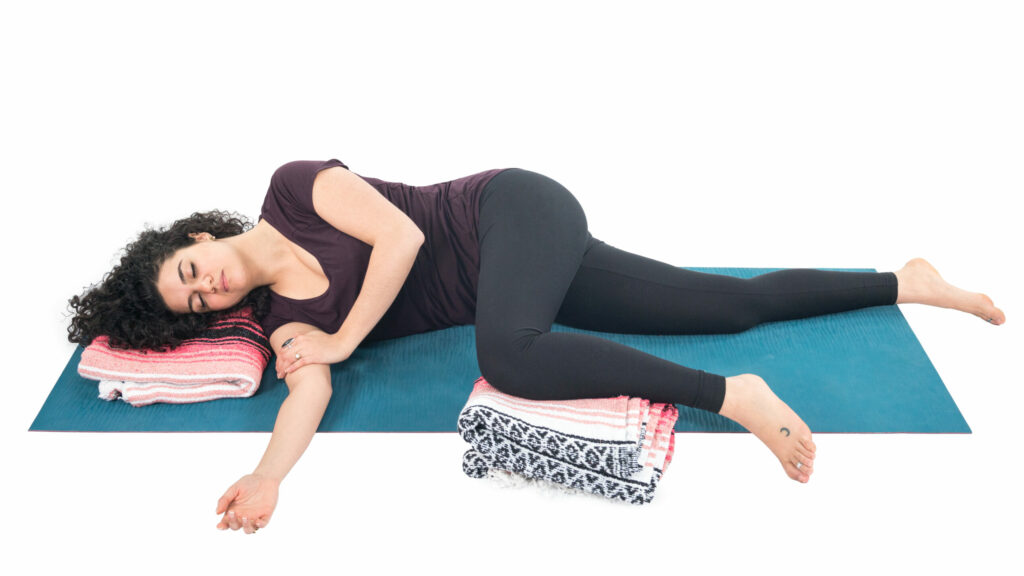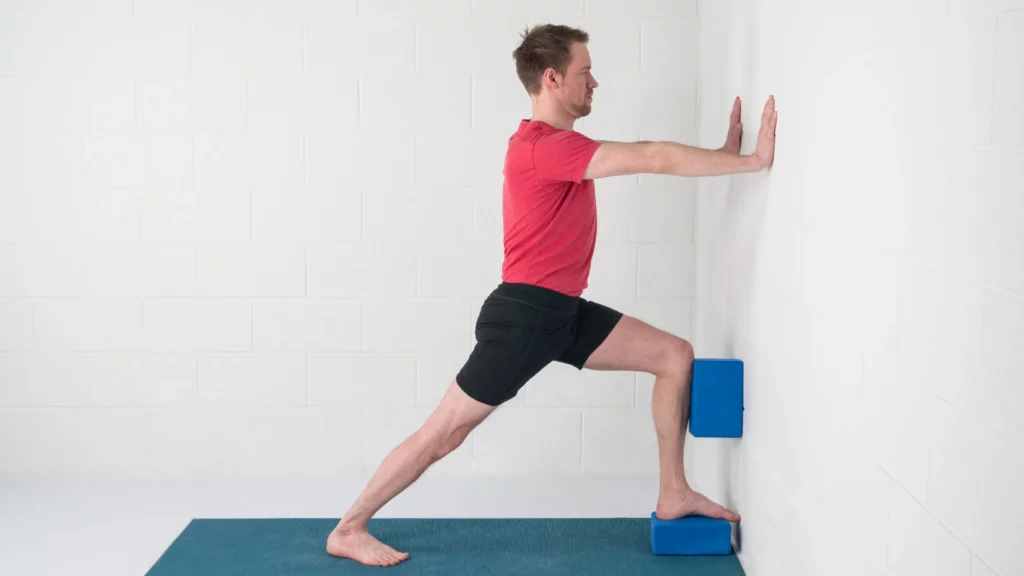Healthy Heart: How Yoga Can Help Prevent Heart Disease

Article At A Glance
Heart disease is an all-encompassing term for heart and blood vessel disease, including heart attack, stroke, and high blood pressure. Although there are genetic causes for each of these conditions, the good news is heart disease can often be prevented. Included in this article are important heart-healthy tips including a mindful regular yoga practice.
Heart disease remains the leading cause of death in both men and women in the United States. It is an all-encompassing term for heart and blood vessel disease, including heart attack, stroke, and high blood pressure.
But the good news is that we know of more and more ways to prevent it. Read below for 5 tips for healthy habits to keep your heart healthy.
5 Tips to Prevent Heart Disease
- Don’t smoke. If you do smoke, ask your doctor for help in quitting.
- Eat a heart-healthy diet of lean meats, fish, limited salt intake, and lots of green, leafy vegetables.
- Maintain a healthy weight.
- Get regular health screenings.
- Exercise regularly, at least 30 minutes most days of the week.
Although cardio exercises such as running, walking, and aerobic classes are most often thought of to keep your heart healthy, research also shows that yoga may have the same benefits in preventing heart disease as traditional exercise.
A review of scientific studies that focused on asana practice in adults, published in the European Journal of Preventive Cardiology, found that yoga could help lower heart disease risks. Study participants who practiced yoga also showed improvement in BMI, blood pressure, cholesterol, body weight, and resting heart rate. (1)
Yoga has long been known to reduce the body’s stress response, which leads to lower blood pressure and decreased strain on the heart. Yet, more vigorous forms of yoga can raise the heart rate to the aerobic range, similar to walking and other traditional exercises. Traditional vinyasa classes and those that regularly practice Surya Namaskar (Sun Salutations) have the most opportunity to raise the heart rate. Know your students and mindfully plan your yoga classes for heart health.
While yoga helps us become more in tune with what our bodies are feeling, it’s also important to note when your body is sending signals that something isn’t right. A heart attack doesn’t always appear as dramatically as it does in the movies. In fact, women rarely experience traditional heart attack symptoms.
Know the Symptoms of Heart Attack in Women
Women are likelier to have heart attack symptoms that don’t resemble traditional heart pain. Heart attack symptoms in women include:
- Neck, jaw, upper back, or shoulder discomfort.
- Abdominal discomfort, including nausea and vomiting.
- Shortness of breath.
- Pain in one or both arms.
- Lightheadedness or dizziness.
- Unusual fatigue.
When planning your yoga class, it’s important to understand that a yogi with heart disease needs to take special precautions to avoid undue strain on the heart. Poses that are contraindicated for people with high blood pressure should also be avoided in anyone with diagnosed heart disease.
Yoga Contraindications for Heart Disease
- Full backbends
- Arm balances
- Standing poses held for a long time
- Standing poses with arms overhead
- Any pose or pranayama that includes breath holding
If your doctor has told you that you are at risk for heart disease, ask about a recommended exercise routine, including yoga. Science has repeatedly shown that exercise is vital for a healthy heart and to control the escalation of heart disease. With just a few simple modifications, many yoga poses are acceptable for all yogis.
Try These 3 Pose Variations for Yoga and Heart Health
1. Savasana (Relaxation Pose) – A Restful, Calming Yoga Pose
Traditional Savasana lying on your back might be difficult for anyone short of breath, such as those with congestive heart failure. Instead, try taking a side-lying Savasana for yoga and heart health.

- Lie on your mat on your right side, with the left side of your face facing the ceiling.
- Place one pillow or rolled blanket under your head and neck.
- Place a second pillow, bolster or stacked blankets between your knees.
- A third pillow, bolster or rolled blanket can be placed between your arms as if you were hugging the pillow. (photo above with side-lying savasana in bed)
2. Virabhadrasana I (Warrior I) – Build Strength Mindfully
Holding your arms overhead can raise your blood pressure and stress your heart unnecessarily. However, bringing your hands to your hips (or the wall, as shown below) will allow you to maintain proper lower body alignment and enjoy this standing pose.

- Begin in Tadasana (Mountain Pose). Step your right foot toward the back of the mat about four feet, or a distance that you are able to keep your back heel down.
- There are several ways to align your feet with each other. Some traditions suggest that your front heel should line up with the back heel. Many yogis find a better stance with the front heel lined up to the mid-arch of their back foot. Still, others suggest that the most structurally sound way to align your feet is to keep them hip-width apart from left to right.
- Turn your back toes to about a 45-degree angle to the right front corner of your mat, and be sure your left toes are pointing forward.
- Bend your left knee, bringing your thigh more parallel to the floor. Make sure you can still see your left big toe with your left knee bent.
- Place your hands on your hips, and find a comfortable position for your hips, being mindful to keep your back leg straight. (Photo above right is a hands-on-the-wall version.)
- Push the back edge of your right foot down to help keep your back knee straight but not locked.
- Keep your hands resting on your hips for the duration of the pose, but don’t hold the pose for longer than 3-5 breaths or a comfortable amount of time for you.
- Repeat on the opposite side.
3. Pranayama, Yoga, and a Healthier Heart
Any pranayama exercise that requires holding your breath is highly discouraged due to the rise in your blood pressure, putting extra pressure on the heart. Rather, a simple 3-Part Breath practice can reduce stress and anxiety, increase the oxygen supply to the blood, keep your lungs healthy, and promote full and deep breathing.

- Find a comfortable seated position on a meditation cushion or in a chair if that’s easiest for you.
- Place your right hand on your belly, with your thumb in line with your navel and your fingers resting gently below.
- Exhale completely through your nose.
- On your next inhalation, fill your abdomen with air first, then your ribs, and finally, bring the breath into your upper chest.
- On your exhalation, contract and release the air first from your chest, then your ribs, and finally, your belly.
- It can be helpful to silently count each part of the breath as you inhale.
- Repeat for a minute or two. It’s important to build pranayama practice gradually. Start with just a minute or two and increase your time by small increments (seconds) over a period of time.
- If at any time you feel dizzy or lightheaded, stop the 3-Part Breath and return to normal breathing.
 Jennifer Williams-Fields E-RYT 200 is passionate about writing, yoga, traveling, public speaking, and being a fabulous single momma to six super kids. Doing it all at one time, however, is her great struggle. She has been teaching yoga since 2005 and writing since she first picked up a crayon. Although her life is a sort of organized chaos, she loves every minute of the craziness and is grateful for all she’s learned along the way. Her first book “Creating A Joyful Life: The Lessons I Learned From Yoga and My Mom” is now available on Amazon. She has had her essays featured on Yahoo! and Dr. Oz The Good Life. She is a regular writer for Elephant Journal Magazine, Your Tango, and YogaUOnline. See more from Jennifer at jenniferwilliamsfields.com
Jennifer Williams-Fields E-RYT 200 is passionate about writing, yoga, traveling, public speaking, and being a fabulous single momma to six super kids. Doing it all at one time, however, is her great struggle. She has been teaching yoga since 2005 and writing since she first picked up a crayon. Although her life is a sort of organized chaos, she loves every minute of the craziness and is grateful for all she’s learned along the way. Her first book “Creating A Joyful Life: The Lessons I Learned From Yoga and My Mom” is now available on Amazon. She has had her essays featured on Yahoo! and Dr. Oz The Good Life. She is a regular writer for Elephant Journal Magazine, Your Tango, and YogaUOnline. See more from Jennifer at jenniferwilliamsfields.com





